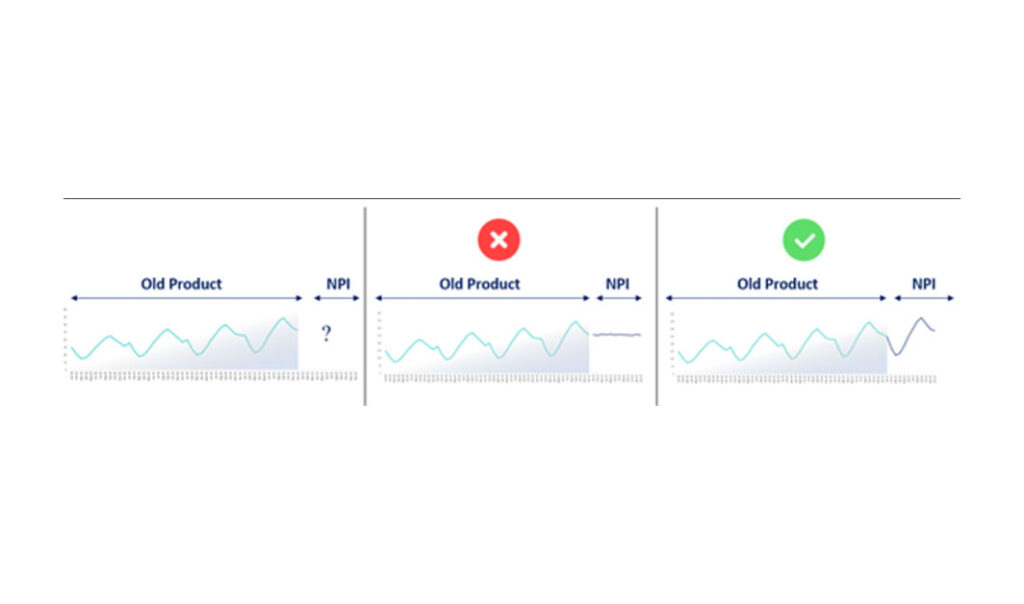Introduction To New Product Forecasting

By Roei Aviram, CEO at Intelichain
One of top challenges supply chains struggle with is forecasting a brand-new product. Every demand planner can tell you that forecasting demand for existing ongoing products is difficult enough, so obviously the job becomes much more difficult when you’re forecasting demand of a new product. Naturally, the main reason it is so complex is the fact you have no historical sales data on which to base your estimates, alongside the uncertainty of how breakthrough your technologies and products will be accepted by consumers.
Despite those difficulties, new product launches are increasingly important across all industries, making innovation very much crucial to maintain market share and be the company’s growth-engine.
So…, the key question you will probably want to address is whether it is actually possible to generate an accurate forecast for a new product?
– The answer is YES. – It’s not easy and requires more than the average effort you are used to, but it is absolutely possible!
Before we go to the details, let’s take a step back and map out the different types of new product introduction (NPI), where we can essentially group the NPI types into the following 5 key categories:
1. Line Extension
The most prominent NPI category, with about 29% of the total global launches world-wide, where a company plans to expand its established product brand name with a new product/s in the product category.
Line extension examples: Colgate extended the classic toothpaste into additional SKUs such as: Colgate Max White, Colgate Max Fresh, Colgate Max Fresh with Whitening, Coca-Cola introduced a cherry flavor, Hellmann’s Mayonnaise with Olive Oil, etc.
2. New Product Version (Product improvements)
The second most prominent NPI category with about 26% of the total global launches world-wide, where a company plans to launch a new product that replaces an existing product by simply providing improved performance or greater perceived value. Easy to identify since in most cases you will see written on the package “New and Improved”.
New product version examples: Coca-Cola Zero with new and improved taste, Crest toothpaste with improved formula, etc.
3. New To The World
This NPI category is very straight-forward, with about 15% of the total global launches world-wide, it happens when a company launches a product that was never seen before in the marketplace.
New to the world examples: first smart phone, first laptops, first High-definition TV/ flat screen TV, iPod, first probiotic ice cream, autonomous vehicle, etc.
4. New To The Company
With about 18% of the total global launches world-wide, “new to the company” category is where the company launches a product that the company has never developed nor sold before, but other companies had. In other words, the product is not new to the world, but is new to the company itself.
New to the company examples: P&G’s first shampoo, Amazon goes from books only to toys, Kellogg goes from snacks to frozen food, etc.
5. Product Repositioning
Often times called “Wave 2” Launches, with about 12% of the total global launches world-wide, Product Repositioning category is where the company is launching existing products targeted to new markets. Repositioning can involve changing other aspects of a brand or product to best fit the new target audience, therefore, changes such as: product price, marketing strategy, color scheme and more is a common thing.
Product Repositioning examples: i-phone was first introduced in USA and a few months after introduced in other markets with different prices, new medicine that was launched in other countries with different graphics after the initial launch, etc.
** Please note – on top of the above 5 categories there is another category that’s called: Cost Reduction. we won’t be covering this category in our article series since it has a strong similarity to line extension and new product version from a statistical and practical standpoint.
In next week’s article we will deep dive and be covering the best practice of forecasting a Line Extension new product. We will discuss the source of data you should use (internal and external), the recommended statistical methods you should apply to maximize your forecast accuracy, the leading approach you should use with seasonal products, the overall process, technologies and much more.
Don’t miss it out!
